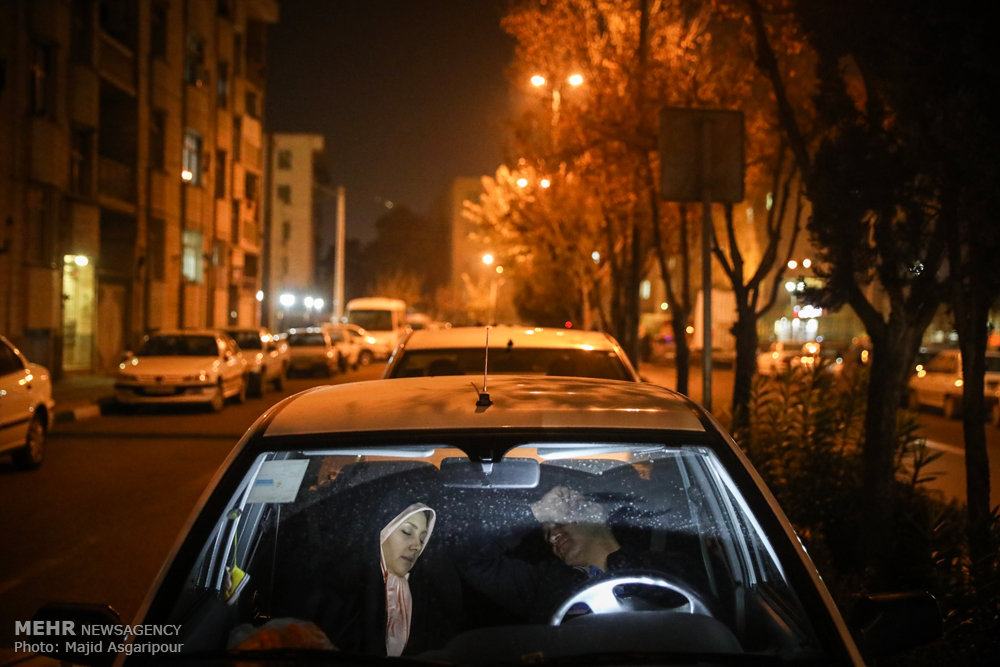Tehran quakes: Tehraners tremble with fear

TEHRAN — Tehran was shaken with yet another minor quake at 00:54 a.m. local time on Wednesday stoking up fear once again into the hearts of terrified citizens.
The epicenter of the magnitude-4.2 tremor that happened at the depth of 12 kilometers was the city of Malard on the border between Tehran and Alborz provinces.
Frightened by the earthquake, people rushed out of their homes and many headed to safe places in their neighborhood, just as they did after a magnitude-5.2 hit the two provinces on December 20.
As announced Emergency Medical Services some 57 got injured while rushing to escape and one died of heart failure apparently caused by the stress.
Some of the schools in Tehran and Karaj –the capital city of Alborz - were closed down and exams were cancelled.
Rumors and truth
The truth is that no one can now tell the truth from the rumors. In the meantime experts and well-known seismologists cannot reach an agreement.
Some believe that the possibility of an earthquake cannot be ruled out for the next three to four months as the first one might trigger stronger quakes by activating Tehran’s fault lines.
However, the others believe that due to the unpredictability nature of the earthquakes no one can tell where or when the next quake might strike.
But there is one point they all agree upon, one way or another a powerful earthquake will ultimately hit Tehran.
Nonetheless, they propose different scenarios for the possible quake. Some believe that the earthquake is so violent that the whole city will be destroyed and millions will die and the city will not be a place to live for decades.
Some other believe that except for the run down areas which constitute to some 20 percent of the city the other buildings are resilient enough to endure a magnitude 7 to 7.5 earthquake.

Safety tips
Official rescue teams from the U.S. and other countries who have searched for trapped people in collapsed structures around the world, as well as emergency managers, researchers, and school safety advocates, all agree that “Drop, Cover, and Hold On” is the appropriate action to reduce injury and death during earthquakes. Methods like standing in a doorway, running outside, and “triangle of life” method are considered dangerous and are not recommended anymore.
According to Earthquake Country Alliance (ECA) your past experience in earthquakes may give you a false sense of safety; you didn’t do anything, or you ran outside, yet you survived with no injuries. Or perhaps you got under your desk and others thought you overreacted.
However, you likely have never experienced the kind of strong earthquake shaking that is possible in much larger earthquakes: sudden and intense back and forth motions of several feet per second will cause the floor or the ground to jerk sideways out from under you, and every unsecured object around you could topple, fall, or become airborne, potentially causing serious injury. This is why you must learn to immediately protect yourself after the first jolt… don’t wait to see if the earthquake shaking will be strong!
In most situations, you will reduce your chance of injury if you:
DROP where you are, onto your hands and knees. This position protects you from being knocked down and also allows you to stay low and crawl to shelter if nearby.
COVER your head and neck with one arm and hand; if a sturdy table or desk is nearby, crawl underneath it for shelter; if no shelter is nearby, crawl next to an interior wall (away from windows), stay on your knees; bend over to protect vital organs
HOLD ON until shaking stops
Under shelter: hold on to it with one hand; be ready to move with your shelter if it shifts
No shelter: hold on to your head and neck with both arms and hands.
While images of collapsed structures in earthquakes around the world are frightening and get the most attention from the media, most buildings do not collapse at all, and few completely collapse.
The main goal of “Drop, Cover, and Hold On” is to protect you from falling and flying debris and other nonstructural hazards, and to increase the chance of your ending up in a Survivable Void Space if the building actually collapses. The space under a sturdy table or desk is likely to remain even if the building collapses- pictures from around the world show tables and desks standing with rubble all around them, and even holding up floors that have collapsed.
DO NOT run outside or to other rooms during shaking.
After the quake
Natural gas, water and electricity can make life pretty comfortable. But in the wake of a natural disaster like an earthquake, those tools of comfort become potentially serious threats to health and well-being. Leaking natural gas is a major source of fires after a disaster, and tap water can become contaminated with harmful microbes or chemicals, or cause flood.
How to safely turn off these three utilities immediately after an earthquake is a big question that is remained unanswered in a big city like Tehran.
But it is important that everyone in a home knows how to turn off the main valve and also turning off the power to a home is crucial after a disaster because sparks from electric devices could ignite natural gas leaks.
Turning off the main water valve does two things: It prevents contaminated water from entering the lines in a home, and it keeps gravity from draining water out of the home’s lines if there is a break in a pipe outside.
The buildings may not seem very resistance or the government may not sound so sure about measures they should take before and after earthquake but let us do our best to save ourselves and our family members once a powerful quake strike.
MQ/MG
Leave a Comment